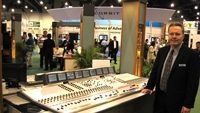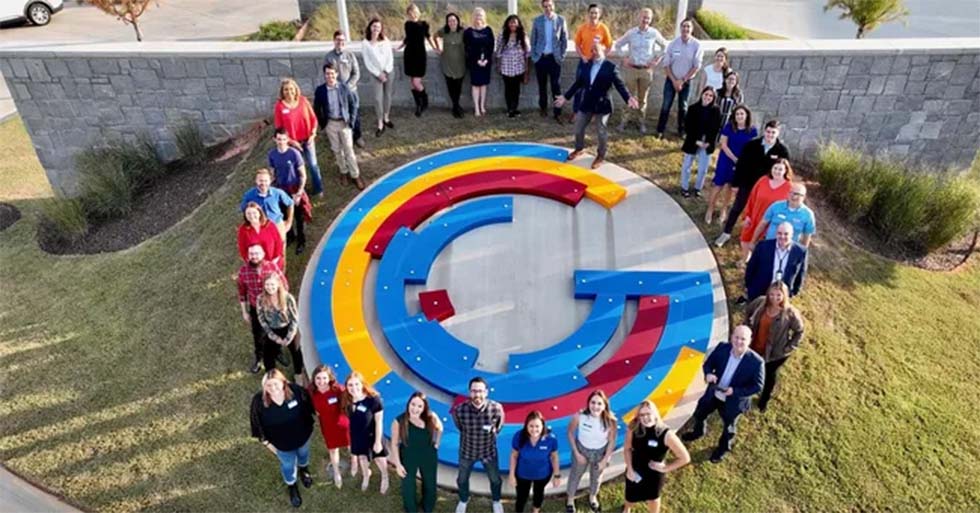Mastering 5.1 surround sound is a subtle art

Last week’s Sound Off interview with Tim Carroll about the challenges broadcasters are facing with DTV-related audio dovetailed nicely with an interview about 5.1 surround sound conducted this spring with Brad Harrison, sales engineer of audio console manufacturer Wheatstone.
During the interview done on the floor of NAB2008 in Las Vegas, Harrison discussed where broadcasters and mobile production stand with 5.1 surround sound as they transition to HDTV.
While a few years ago, audio operators in the OB community were still climbing the learning curve, for the most part, they have mastered the most appropriate ways to employ 5.1 surround sound for sports and entertainment production, he said. Audio operators at stations aren’t as far along, but are progressing rapidly, he added.
HD Technology Update: In increasing numbers, broadcasters are moving to HD for local newscasts. How would you assess broadcasters’ interest in supporting 5.1 surround sound in a local news environment?
Brad Harrison: Well, it’s been a little slow in coming. All of our mixers have always supported 5.1, but up until very recently, most of them haven’t really done anything with it. They’ve just wanted to have the capability for when the time comes to do that.
Now we are seeing a lot more people actively doing production in 5.1. People who have invested in our systems have that capability from the very beginning, so they can take 5.1 sources on a single fader, or they can do mono sources, pan to the 5.1 bus, and we give you that capability very easily within the system.
It’s one of those things where people can invest in the system now, and even if they aren’t actively doing 5.1, the infrastructure is always there for them to move to it when the time comes.
The professional video industry's #1 source for news, trends and product and tech information. Sign up below.
HD Technology Update: In the DTV environment, broadcasters continue to contend with lip sync problems. What’s your perspective on the lip sync issue?
Brad Harrison: What we’ve done to address it is build in delay to our consoles that allows you to selectively add delay to each channel individually, or to the entire program. We allow you to adjust that up to 20 frames of delay in half-frame increments. That’s a standard option that we’ve offered for a number of years.
HD Technology Update: What are your thoughts on the source of the problem?
Brad Harrison: The actual source of the problem is that the video processing has a lot longer latency than the audio portion of it, so you are always going to be faced with that until the processing speed of the video catches up with what they are trying to do.
HD Technology Update: Yes, I understand, but I thought there also has been speculation that there might be some sort of deficiency in MPEG-2 that could be adding to the loss of audio-video sync.
Brad Harrison: It depends on which codec is being used, but each one is going to introduce a certain amount of latency in the system. A lot of that has to do with the chipsets that are being used in the physical encoders, and I think as time goes on and the technology in the chipsets improves, that’s something that will probably fade away. But for the time being, the reality is it’s something that we have to deal with. Additionally, there are certain software encoders that will always have a certain little latency that you’re going to have to deal with in one way or another.
HD Technology Update: In support of the industry’s transition to HD, there have been many OB vehicles built for HD production. What’s your perspective on the audio complements being installed and some of the requirements to support 5.1 surround production at a sporting or entertainment event?
Brad Harrison: The key there is having the equipment to handle that properly, which we can supply. The other thing is having the operators who have the expertise in dealing with surround and understanding that there is a learning curve as far as operators are concerned. I think they tend to overuse certain effects until they realize that a lot of the surround work that’s done, especially in sporting, is really in ambience and not in-your-face-type effects.
I’ve seen some original 5.1 sporting events that were real heavy in audio effects that tend to be annoying, and as time goes by and people become a lot more comfortable working with that type of technology, it becomes the subtle things that provide a nice enhancement to the experience.
HD Technology Update: Is the industry at that stage?
Brad Harrison: Over the last few years, I think OB operators have been progressing up the learning curve and are at the point now where they are using 5.1 surround sound very well. At the local station level for local production, there’s always going to be that learning curve on the front end, but it’s something that happens fairly quickly.
Tell us what you think! HDTU invites response from our readers. Please submit your comments to editor@broadcastengineering.com. We'll follow up with your comments in an upcoming issue.
